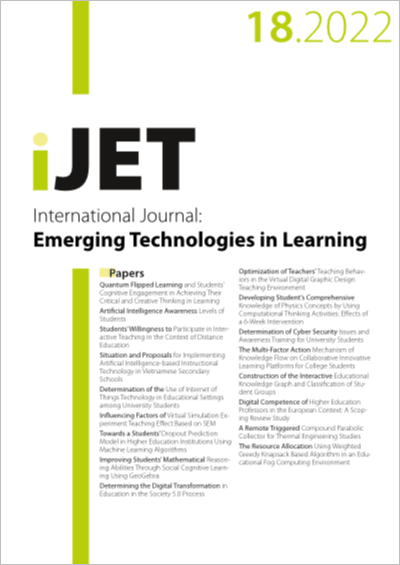Influencing Factors of Virtual Simulation Experiment Teaching Effect Based on SEM
DOI:
https://doi.org/10.3991/ijet.v17i18.34489Keywords:
virtual simulation, teaching effect, SEM analysis, acting path, experiment courseAbstract
Virtual simulation experiment teaching has been extensively applied to higher education. Recognizing the influencing factors of virtual simulation experiment teaching effect and analyzing the influencing strength of each factor has become a highly concerning problem in the education circle. To improve the virtual simulation experiment teaching effect effectively and make feasible optimization measures, influencing factors were first reviewed and analyzed in this study based on previous research from four perspectives of engagement of students, the academic basis of students, virtual simulation experiment design, and teachers’ guiding. Second, the conceptual model and structural equation model (SEM) to analyze the virtual simulation experiment teaching effect were constructed by the SEM analytical method. On this basis, nine hypotheses of the model were designed. Finally, a case study based on the three built virtual simulation teaching projects was conducted. The significance of the influencing factors on the teaching effect was verified through questionnaires, SPSS analysis, and AMOS software. The acting path and influencing the strength of influencing factors were analyzed. Some strategies and measures to improve the virtual simulation teaching effect were proposed. Results demonstrated that virtual simulation experiment design is the primary influencing factor of the teaching effect, followed by engagement of students, teachers’ guiding and academic basis of students successively. Conclusions can provide theoretical support and decision-making references to formulate strategies for improving virtual simulation experiment teaching.
Downloads
Published
How to Cite
Issue
Section
License
Copyright (c) 2022 Xiaofang Xie, Xinyao Guo

This work is licensed under a Creative Commons Attribution 4.0 International License.


